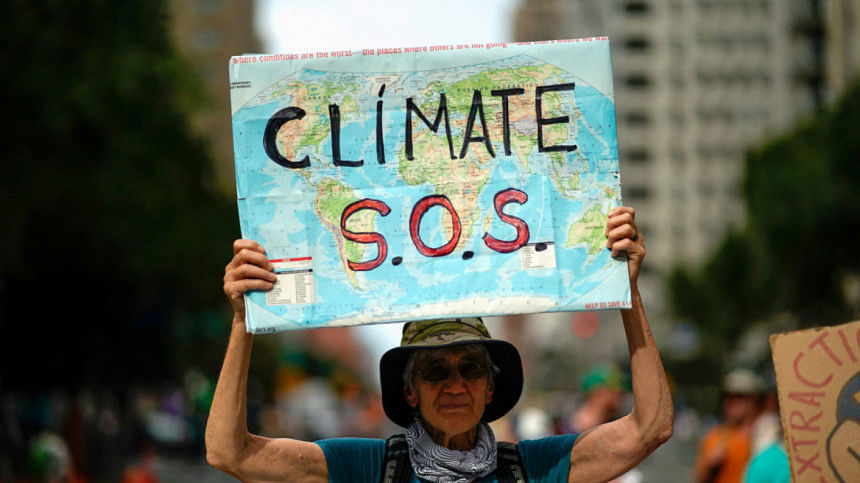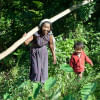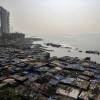The climate budget for FY26 is disappointing

Since the 2015-16 fiscal year, alongside the national budgets, the Finance Division of the government has commendably produced "climate budgets." These modest-sized documents outline the expenditure of 25 ministries and government agencies on climate change. Per the climate budget of FY2025-26, these agencies have been allocated Tk 41,208.97 crore to spend on climate action in the new fiscal year. This represents 10.07 percent of their total budget, 5.2 percent of the national budget, and 0.66 percent of GDP—figures similar to those seen in recent years. However, the new climate budget disappoints me for three reasons.
First, There is little to no structural improvement in the 136-page document compared to the previous versions. For instance, in January 2019, the Bangladesh Climate Change Strategy and Action Plan (BCCSAP, 2009), a revolutionary policy instrument, became obsolete after its 10-year tenure. Since then, not updating it in the five and a half years until July 2024 was a failure of the previous regime. But how can the current reform-mandated interim government, with capable and dynamic advisers in charge of finance and environment, present the new climate budget based on the outdated six pillars of the BCCSAP? The themes are: i) food security, social protection, and health; ii) comprehensive disaster management; iii) infrastructure; iv) research and knowledge management; v) mitigation and low-carbon development; and vi) capacity-building and institutional strengthening.
The world is fast shifting towards new directions in climate action. The new climate budget of Bangladesh should have allocated funds under the Just Transition theme—not just for emission reduction, but also for ensuring workers' rights during such transitions. Another emerging theme is Locally Led Adaptation (LLA), which shifts responsibility for adaptation to local communities and actors, supported by external stakeholders. Where adaptation fails, we face "loss and damage"—an area beyond conventional disaster response, and particularly relevant to Bangladesh.
Over the past six years, approaches like nature-based solutions (NbS) have been mainstreamed into our development and climate agenda, and the climate budget should have recognised that. It's time we understood that knowledge creation and management, capacity-building, and technology transfer cannot remain standalone themes; they must cut across all major areas. Yet, we remain stuck with the philosophies of 2009 for another year.
Second, the allocations are still made across 25 government agencies, as has been the practice for the past nine years. It has been repeatedly suggested to include local-level allocations in the climate budget, as we now have a robust understanding of location-specific climate vulnerabilities. Bangladesh's National Adaptation Plan (NAP) for 2023-2050 exemplifies such assessments. So, it would not have been difficult for the Finance Division to make geographically focused climate budget estimates—specifically for districts, upazilas, and unions—based on project locations already mentioned in public- and donor-funded project documents. That would have been a fundamental shift, but the opportunity was missed.
Third, for reasons unknown, the Finance Division remains fixated on 25 ministries, departments, and divisions when considering the climate budget. I have long advocated for expanding this boundary. A clear candidate for inclusion is the youth ministry, especially after the youth-led movement in July last year. The interim government seems more inclined to engage young people in national politics than in climate action. That's why the enthusiasm sparked by the chief adviser at COP29 in Baku last year, where he engaged with the Bangladeshi youth, failed to be reflected in this crucial annual climate finance exercise.
Similarly, it is perplexing why the ministries of religious affairs and information have no place in the climate budget. Given the influence of religious leaders in shaping beliefs, social systems, and politics, shouldn't they be part of climate action? The information ministry's role has also been largely ignored, except for one Bangladesh Climate Change Trust Fund (BCCTF) project. Media houses working on climate do so largely due to the personal commitment of senior leaders, not government facilitation.
Many of these issues could have been addressed if the relevant ministries had held consultations with stakeholders before drafting the climate budget.
Indeed, the failure of the Finance Division and the environment ministry to reform the climate budget is disappointing. Equally disheartening is the relative silence of NGOs and civil society organisations (CSOs), which used to be more vocal about such shortcomings. That said, over the next few months, we will likely witness a flurry of activity within ministries and NGO/CSO offices as they prepare for COP30 in Belém, Brazil in November this year.
This apathy towards the climate budget mirrors another alarming trend: no political party in Bangladesh—new or old, young or established—addresses climate change in any meaningful way. Unless this changes, the upcoming election manifestos will likely have nothing significant on climate change—the most pressing, transgenerational crisis of our lifetime. And if that happens, it would truly be a disappointment.
Dr Haseeb Md Irfanullah is an independent environment and climate change consultant, and visiting research fellow at the University of Liberal Arts Bangladesh (ULAB). He can be reached at [email protected].
Views expressed in this article are the author's own.
Follow The Daily Star Opinion on Facebook for the latest opinions, commentaries and analyses by experts and professionals. To contribute your article or letter to The Daily Star Opinion, see our guidelines for submission.

 For all latest news, follow The Daily Star's Google News channel.
For all latest news, follow The Daily Star's Google News channel. 










Comments